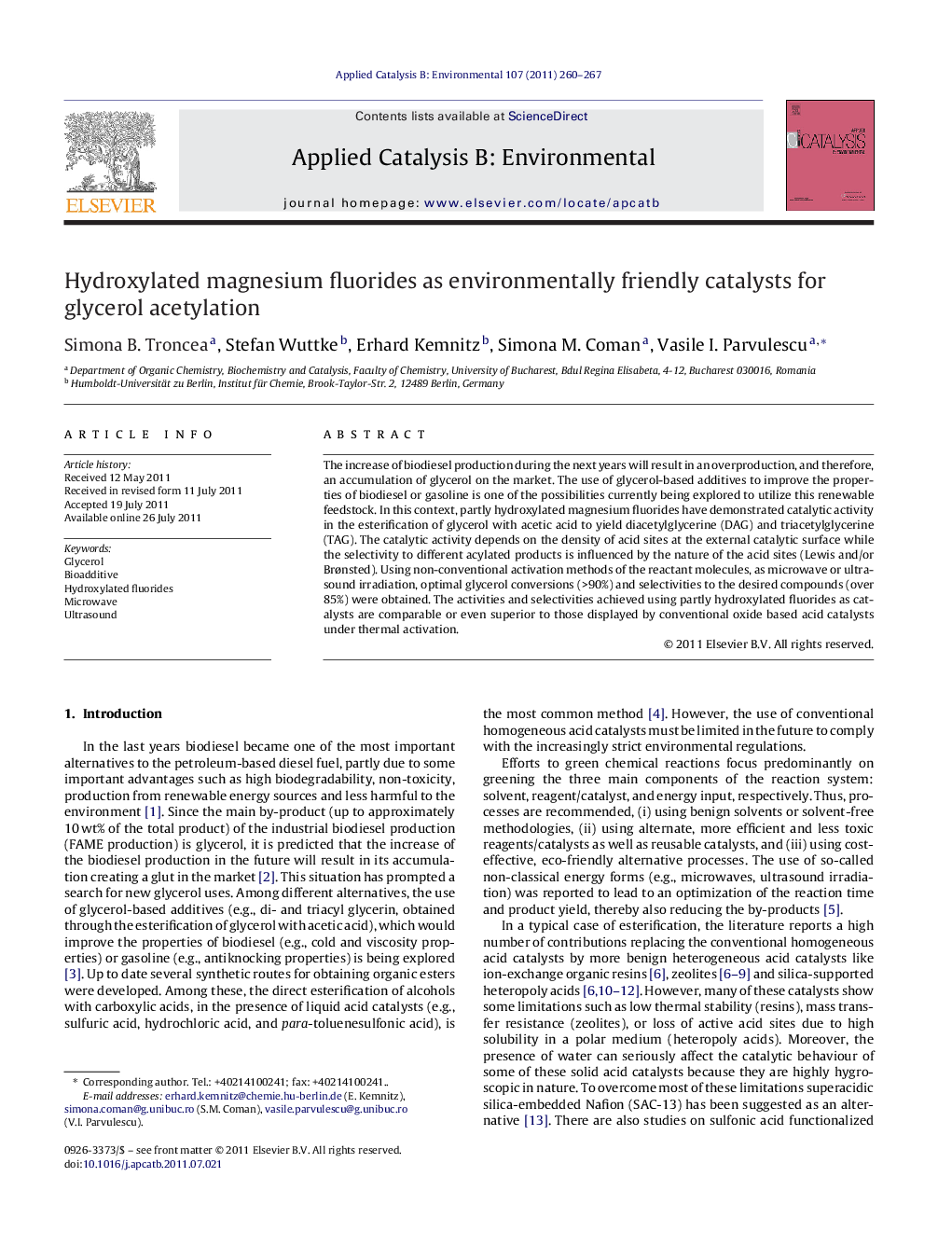| کد مقاله | کد نشریه | سال انتشار | مقاله انگلیسی | نسخه تمام متن |
|---|---|---|---|---|
| 46882 | 46452 | 2011 | 8 صفحه PDF | دانلود رایگان |

The increase of biodiesel production during the next years will result in an overproduction, and therefore, an accumulation of glycerol on the market. The use of glycerol-based additives to improve the properties of biodiesel or gasoline is one of the possibilities currently being explored to utilize this renewable feedstock. In this context, partly hydroxylated magnesium fluorides have demonstrated catalytic activity in the esterification of glycerol with acetic acid to yield diacetylglycerine (DAG) and triacetylglycerine (TAG). The catalytic activity depends on the density of acid sites at the external catalytic surface while the selectivity to different acylated products is influenced by the nature of the acid sites (Lewis and/or Brønsted). Using non-conventional activation methods of the reactant molecules, as microwave or ultrasound irradiation, optimal glycerol conversions (>90%) and selectivities to the desired compounds (over 85%) were obtained. The activities and selectivities achieved using partly hydroxylated fluorides as catalysts are comparable or even superior to those displayed by conventional oxide based acid catalysts under thermal activation.
Figure optionsDownload as PowerPoint slideHighlights
► DAG and TAG can be formulated with petroleum-derived fuels to improve their properties.
► Hydroxylated nanoscopic fluorides have demonstrated a good catalytic behaviour in the acylation of glycerol.
► It is advantageous to use microwave or ultrasound irradiation in the synthesis.
Journal: Applied Catalysis B: Environmental - Volume 107, Issues 3–4, 21 September 2011, Pages 260–267